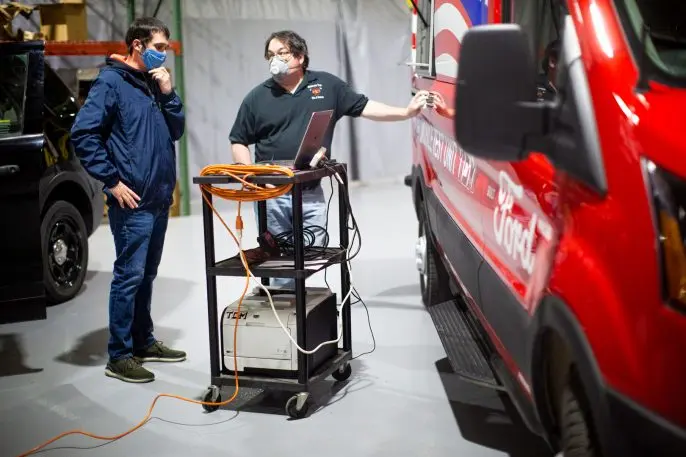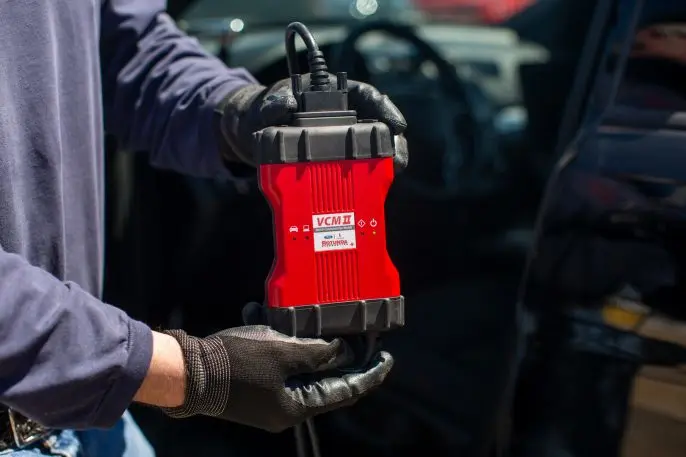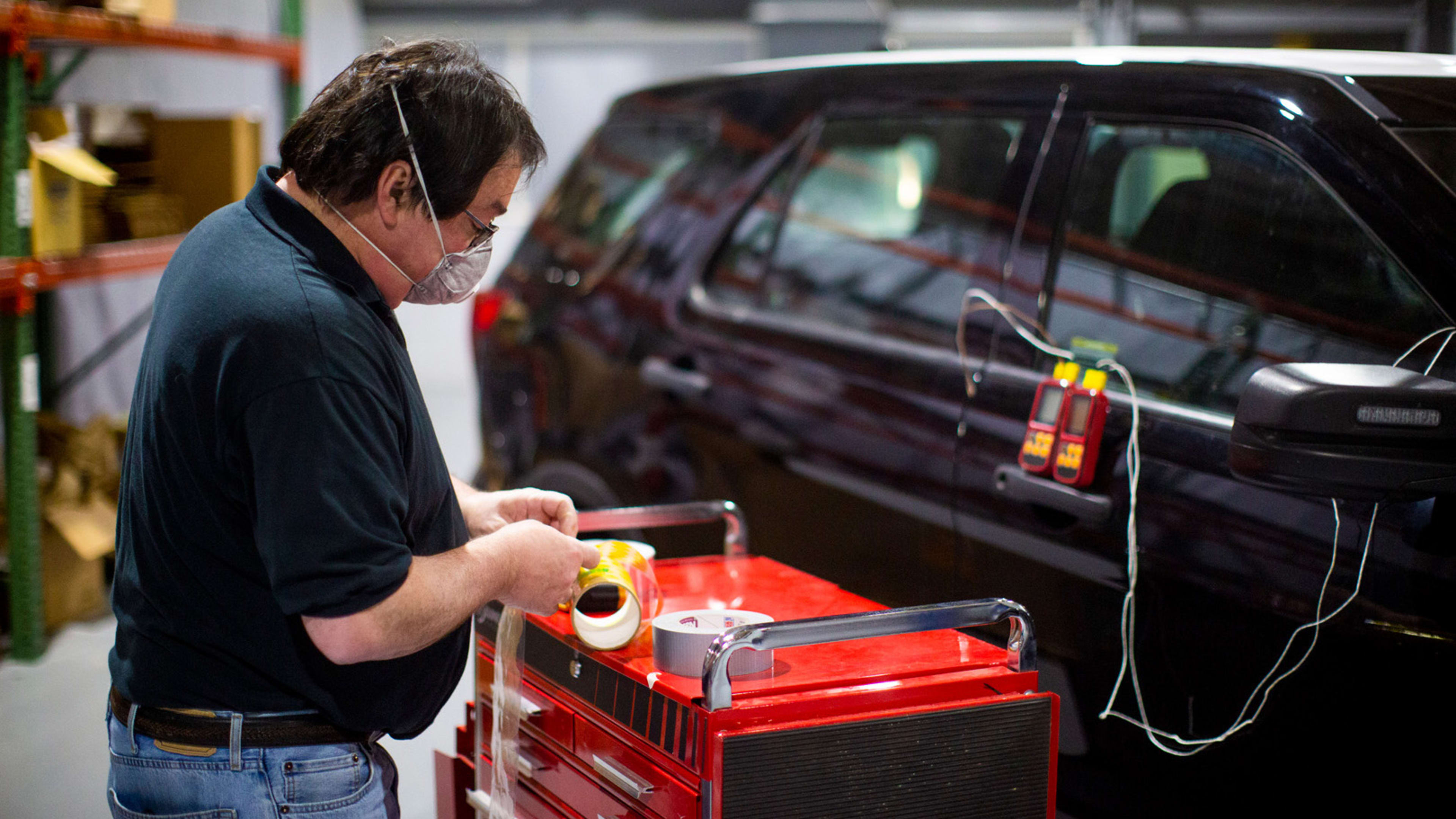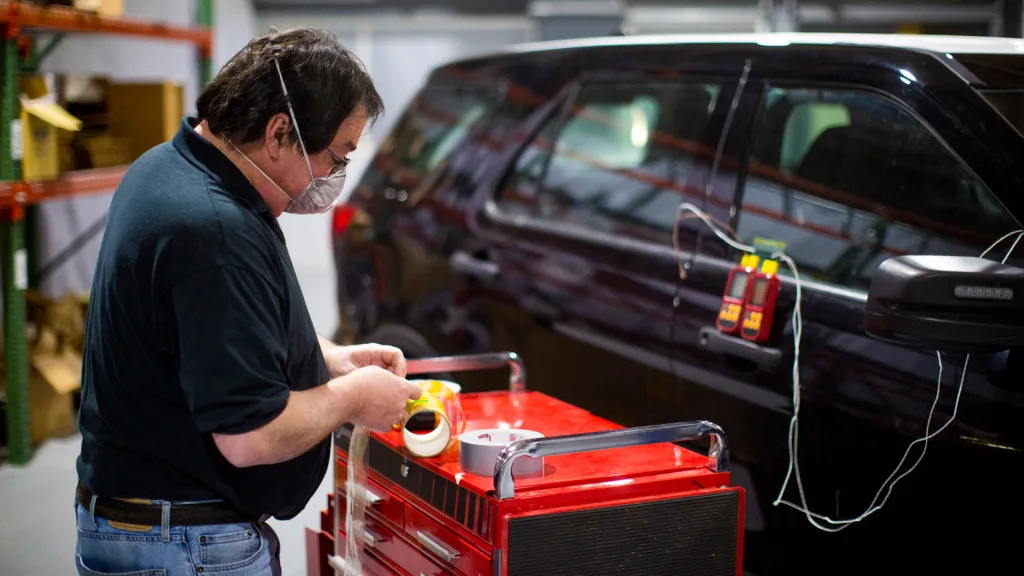As COVID-19 has spread across the U.S., sterilizing wipes and hand sanitizer have been in short supply, which was a problem for the NYC police department. So it reached out to Ford to see if there were alternative cleaning products that it could use to keep its fleet of Interceptor SUVs sterile for officers to share across shifts.
And that’s when an engineer at Ford realized: They didn’t need bleach to kill COVID-19 when the car’s own heater could do the job instead. And over the process of just 40 days, the auto company created a software patch that could upgrade the Interceptors to self-sterilize with the climate control system in just 15 minutes, no elbow grease required. (That patch is currently being installed on NYC police vehicles, and it’s offered to police officers free nationwide through dealers, though Ford is unsure how many have received the update to date.)
But it isn’t just a tool that could work in high horsepower police SUVs. According to Bill Gubing, Ford’s director of passenger vehicles and SUVs, it could work in just about any car on the market, with the right retrofitting.
How is this possible? COVID-19 is extremely susceptible to heat. And car engines? They put out a lot of heat.

Why it works
While it’s still uncertain if summer climates will curb the spread of COVID-19, studies have demonstrated that you don’t need blazing hot temperatures to kill the coronavirus. Teaming up with Ohio State University, Ford confirmed that a temperature of 132.8 degrees for 15 minutes would reduce viral concentrations by more than 99% on surfaces and in the air.
Meanwhile, a properly functioning car heater blows air that’s around 130 degrees already, so in reality, a car needs just a few little nudges to get up to that temperature. And in Ford’s case, those nudges could be handled entirely by a software update, which modifies the engine and onboard climate control.
[Image: Ford]Ford’s sterilizing mode software needs to be installed by a licensed dealer, then activated either by a connected laptop, or an eight-button sequence on the steering wheel. That prompt triggers the engine to idle at a higher RPM than it normally would—about 1800 to 1900 RPM—which simulates cruising at a decent speed on the highway. The extra effort burns more gas when parked, of course, but it also ensures the engine generates a good amount of heat. The engine is cooled by liquid coolant, which doesn’t just capture the heat, but harvests it and delivers it to the heater.
Usually, when that heat gets beyond human comfort or safety, the coolant valve closes, ensuring more heat cannot be delivered to the heater. In Ford’s COVID-19 mode, it overwrote that safety protocol. And as a result, the air blowing out of the heat registers gets a LOT hotter.
“We’ve seen north of 180, 185 degrees,” says Gubing. “So that’s substantially more than we’d [normally] operate.”
Once the sterilizing mode is activated, the user exits the car and closes the door. The hazard lights flash in warning, and the speedometer ramps up to 100 mph. Instead of velocity, however, that speedometer is marking progress. This makeshift ticker declines over 15 minutes to reach 0, allowing workers to know the process is over (the brake lights also engage to signal the end of the process).

Could we all get this feature one day?
Given that Ford could only alter the car’s software, the company still managed to build meaningful feedback into the system to ensure officer safety. Even still, Gubing admits this is something of a hack, and that, while it makes sense in the hands of public safety specialists, it wouldn’t necessarily make sense for widespread deployment. “It relies on the due diligence of the officer to make sure it’s secure and safe,” he says, before teasing coyly, “as we look forward, we’ll start to figure out what’s next with [the feature], based upon the reaction.”
Does that mean Ford is considering COVID-19 sterilizations for its wider fleet of cars aimed at the public? Gubing doesn’t say, but he does confirm that even a small car, like a Ford Fiesta, could be retrofitted with this capability. “Most internal combustion engines have that general capacity,” he says.
In any case, it’s an intriguing possibility. Ride-share companies like Lyft and Uber have tanked in the face of the pandemic, in part because it simply doesn’t seem safe to get into a stranger’s car anymore. But moreover, as we endure COVID-19 while prepping for the next inevitable pandemic, it seems increasingly clear that there is no one silver bullet to stop the spread of infection everywhere. We need to be prepared to battle pathogens with air filtration, antimicrobial surfaces, ultraviolet light (though, err, not blasted inside your body), personal masks, socially distant interior design, and, sure, maybe even our car’s heater.
Recognize your brand’s excellence by applying to this year’s Brands That Matter Awards before the early-rate deadline, May 3.






